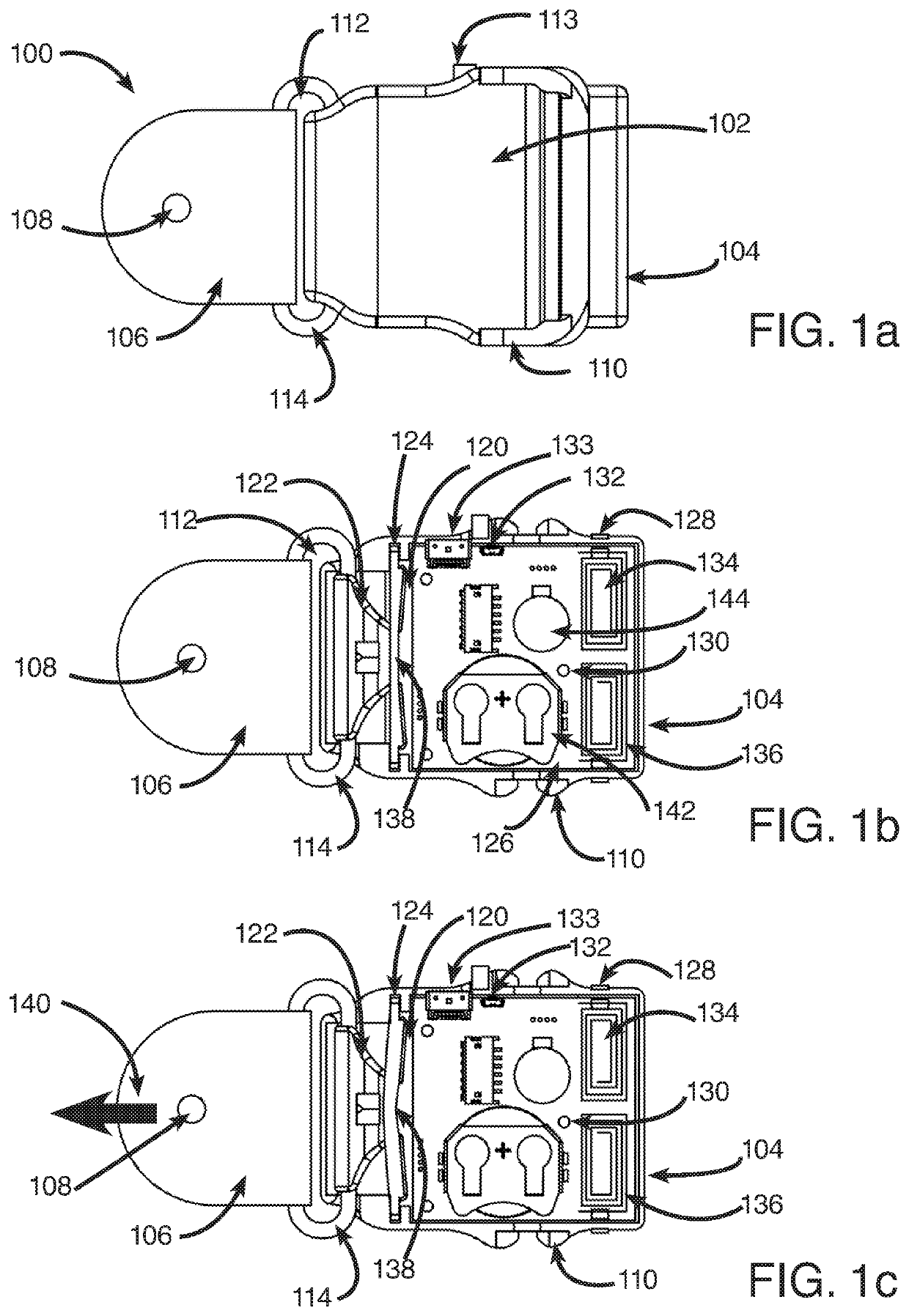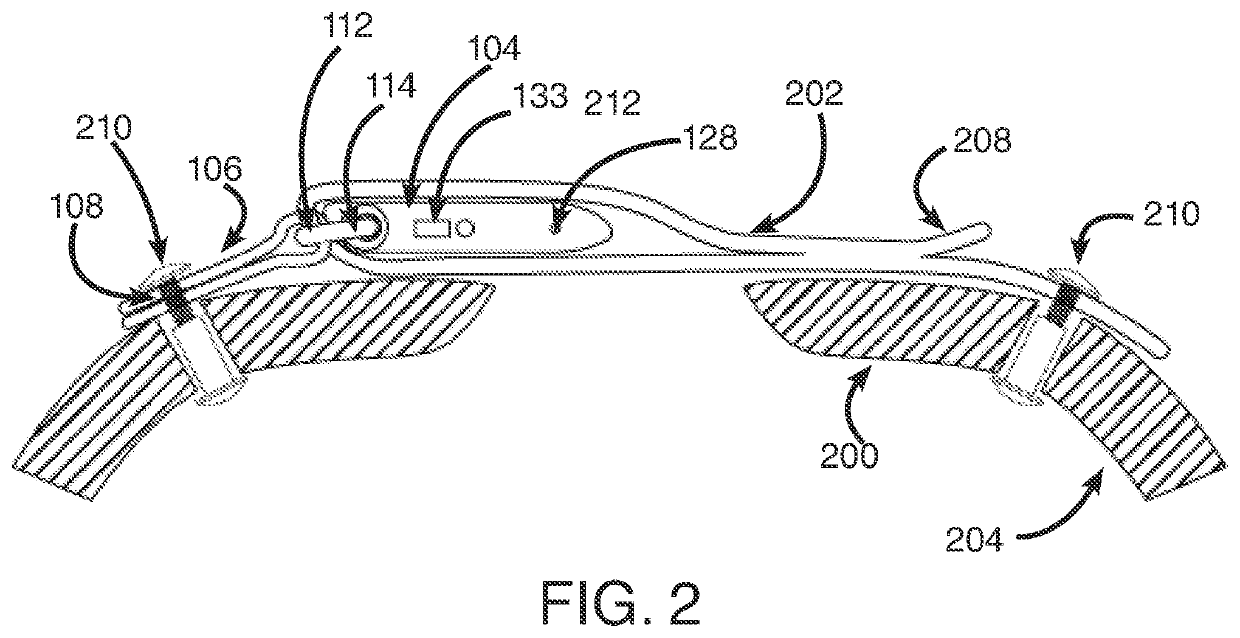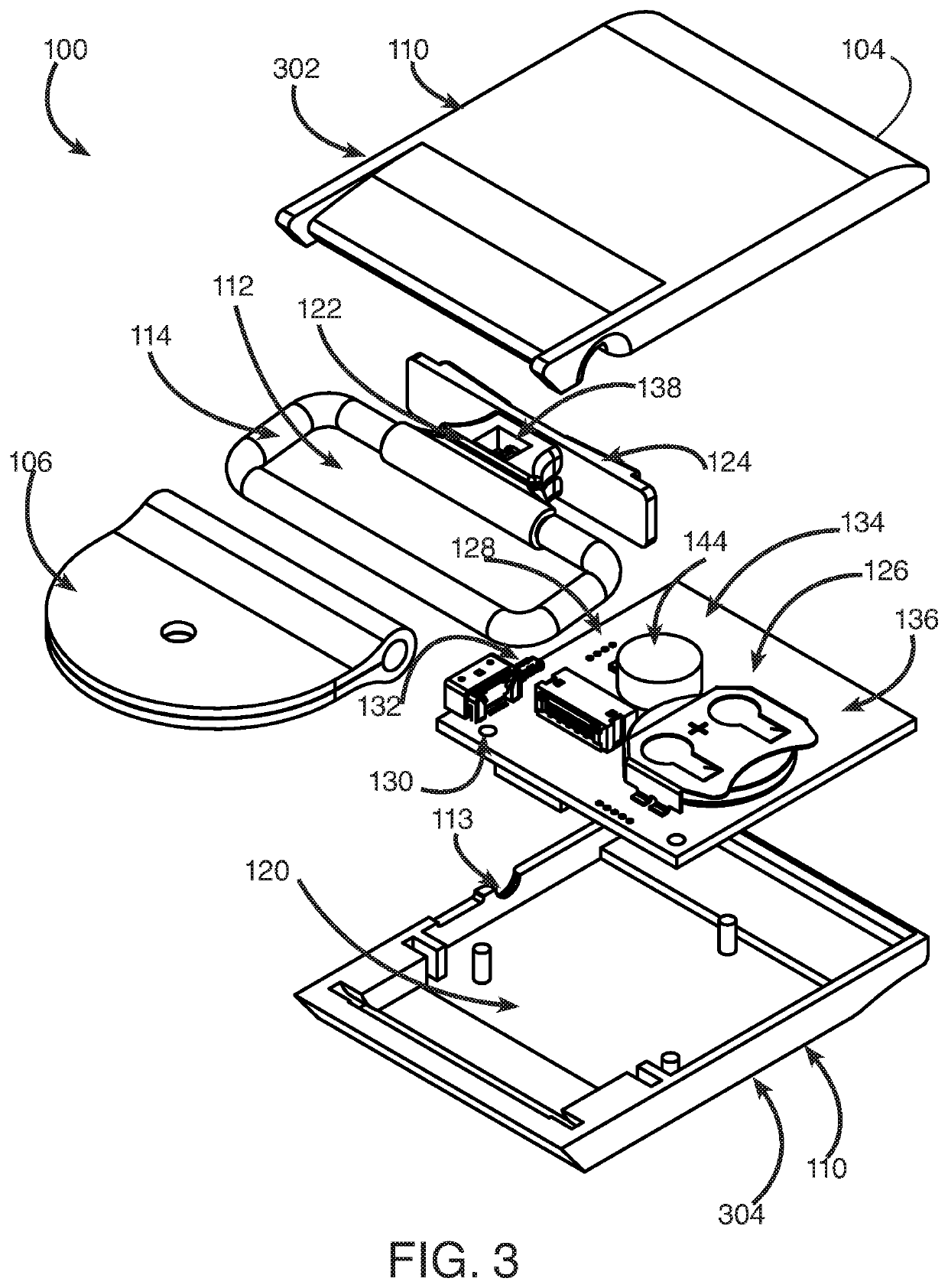Sensor and Feedback Platform for Use in Orthotic and Prosthetic Devices
a technology of applied in the field of sensor and feedback platforms for use in orthotics and prosthetic devices, can solve the problems of inability of care providers to make informed decisions on patient wear characteristics, limited information supplied to users and/or their colleagues, e.g., parents, to achieve the effect of convenient immediate and widespread adoption and use, and efficient and cost-effectiv
- Summary
- Abstract
- Description
- Claims
- Application Information
AI Technical Summary
Benefits of technology
Problems solved by technology
Method used
Image
Examples
Embodiment Construction
)
[0052]According to the present disclosure, systems and methods are provided for monitoring and / or measuring parameters associated with the use of various devices / systems, e.g., orthotic devices and prosthetic devices, such as leg braces, scoliosis braces, arm slings, post-operative back braces, knee braces, prosthetic units and the like. In exemplary implementations, the disclosed systems and methods are adapted to communicate the monitored and / or measured parameters, e.g., through visual, haptic (vibratory) and / or auditory signals or cues. Moreover, the monitored and / or measured parameters may be transmitted to a remote device that is programmed to store, process, analyze and / or display the data. Various analytical tools may be supported by and / or incorporated in the disclosed systems and methods, e.g., analytics related to anatomical developments of the user, analytics related to usage frequency / duration, analytics related to force delivery, analytics related to suitability of an...
PUM
 Login to view more
Login to view more Abstract
Description
Claims
Application Information
 Login to view more
Login to view more - R&D Engineer
- R&D Manager
- IP Professional
- Industry Leading Data Capabilities
- Powerful AI technology
- Patent DNA Extraction
Browse by: Latest US Patents, China's latest patents, Technical Efficacy Thesaurus, Application Domain, Technology Topic.
© 2024 PatSnap. All rights reserved.Legal|Privacy policy|Modern Slavery Act Transparency Statement|Sitemap



